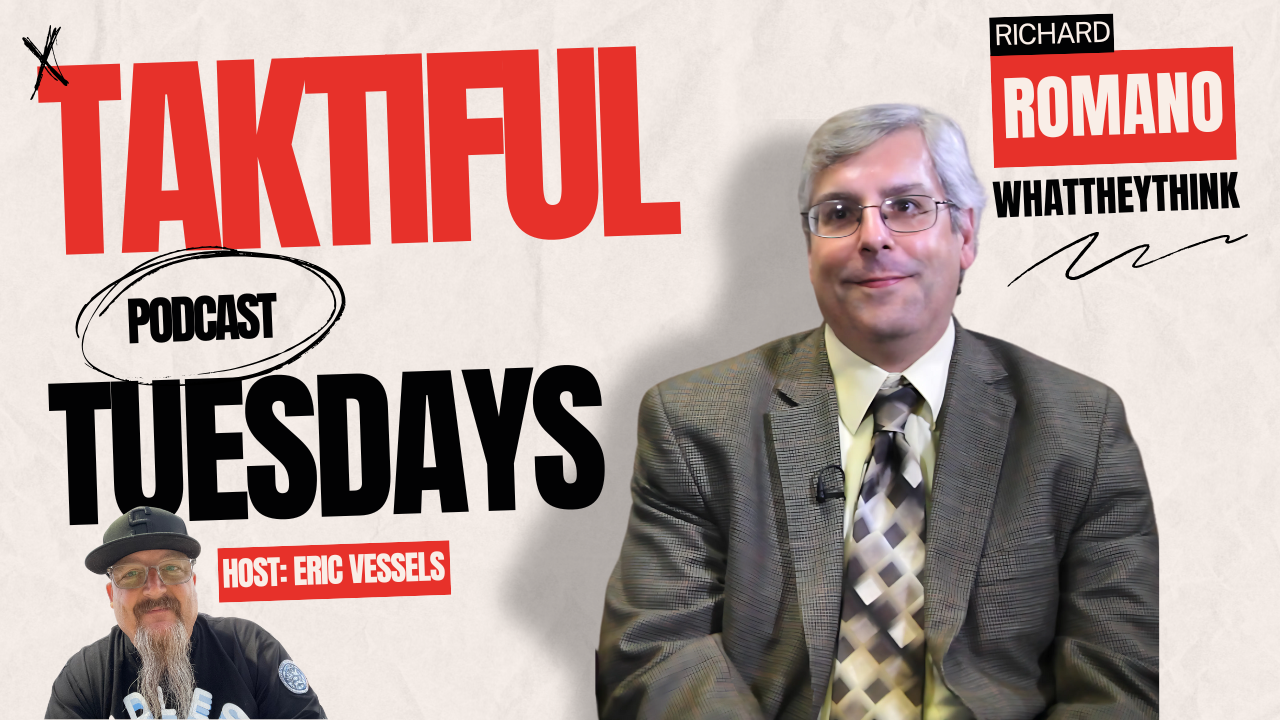Contributed by Sabine Lenz
(Sabine Lenz, PaperSpecs, is a regular contributor to WhatTheyThink Going Green. Watch for her insights monthly.)

It was exactly 3:00 p.m. I remember this very vividly, as I looked at my watch thinking this is the first time all day that someone has actually referred to graphic design.
I was sitting among hundreds of graphic designers during the recent
Compostmodern conference. We had heard some very inspiring speakers ... from Eames Demetrios to Michel Gelobter ... from industrial designers to architects.
3:00 p.m. - six hours into the conference - someone from the audience put out the question: "Short of quitting our jobs and moving to wherever it is help is needed, what is it that graphic designers can do to make this world a better place?"
The answer: Designers are the storytellers. Not that storytelling isn't a very honorable profession, but I felt a little put out by this comment.
I checked with a designer friend a few days later. Amy, the owner of a design studio, took offense as much as I did. Is this all we are in the eyes of the world? Storytellers?
Well, then let me tell you my story.
Once upon a time, I used to live on a small island called Tasmania (yes, the one with the devils). Living in a small house atop a hill, overlooking a gorgeous bay. We had only lived there for a few months, when I found out that the state government was planning to turn the wildlife-protected bay into a major wood chip port. Not the view I wanted to look at, let alone the environmental ramifications.
Despite the prevailing sentiment of many people I talked to ("This is the government you know, there's nothing you can do."), it didn't take long before I hooked up with a local group that was opposing the port, the Channel Citizens. The small core group included scientists, journalists, a wooden boat builder, an ER nurse ...
Science was not my strong suit, so I utilized my own sets of talents. Lifting the group's image from "the Birkenstock-wearing, tree-hugging greenies" to that of a well-organized community group that had to be reckoned with.
We had our own logo, newsletter, Web site, T-shirts, banners ... you get my drift.
A local printer gave us signs to post along the roads at cost (he had government contracts and could not officially be associated with us). Another printer (who shall remain anonymous - government contracts you know) provided our newsletter for free.
We organized community get-togethers, protest marches and fundraisers. Everyone up and down the Channel peninsula knew our logo.
Yes, it was a small town we lived in (there are only 120,000 people living on the whole island), but when driving through the towns in our vicinity, nearly every front yard sported one of the Channel Citizens' signs opposing the port.
Getting sufficiently annoyed with our activities, the state government finally sent two representatives to explain to our group how great this port development would be for the economy of the State of Tasmania. Needless to say, they were slightly taken aback by the well-prepared and organized questions we fired at them. Not my doing I have to admit, but Hans our biology scientist had us well prepped.
Long story short - a year and a half after I joined the group, the government officially declared the plans for the port abandoned. It was a somewhat unreal moment. We couldn't believe we finally had reached our goal.
The 12 core members of our group met to celebrate, and I will never forget when Hans, a man of few words, came up to me and declared, "We never could have done this without your great designs. The government no longer could push us aside as the greenie treehuggers, but started to take us seriously. I can't thank you enough." And this from a scientist who couldn't tell Helvetica from a hole in the ground.
This is just one of many stories designers all over North America, and for that matter the world, could tell. Many of them are actively involved in a charity or donate their time and talent for a great cause.
So don't underestimate that great design can change the world. Next time you meet a designer, ask them to tell you their story.
 About Sabine Lenz, Founder of PaperSpecs
About Sabine Lenz, Founder of PaperSpecs
Sabine Lenz, graphic designer and world traveler, had a "Eureka moment" during the development of a key project when she discovered after a long search that the ideal paper she had chosen from her library of swatchbooks was no longer available.
To prevent a repeat occurrence, for herself and designers around the world, she launched
PaperSpecs, the first online paper database specifically developed for the design and print industries.
With access to information on more than 4,400 papers from over 70 mills, the latest promotions and mill swatchbooks, PaperSpecs has been titled "
THE Paper resource" by
Frank Romano, Prof Emeritus RIT.
 It was exactly 3:00 p.m. I remember this very vividly, as I looked at my watch thinking this is the first time all day that someone has actually referred to graphic design.
I was sitting among hundreds of graphic designers during the recent Compostmodern conference. We had heard some very inspiring speakers ... from Eames Demetrios to Michel Gelobter ... from industrial designers to architects.
3:00 p.m. - six hours into the conference - someone from the audience put out the question: "Short of quitting our jobs and moving to wherever it is help is needed, what is it that graphic designers can do to make this world a better place?"
The answer: Designers are the storytellers. Not that storytelling isn't a very honorable profession, but I felt a little put out by this comment.
I checked with a designer friend a few days later. Amy, the owner of a design studio, took offense as much as I did. Is this all we are in the eyes of the world? Storytellers?
Well, then let me tell you my story.
Once upon a time, I used to live on a small island called Tasmania (yes, the one with the devils). Living in a small house atop a hill, overlooking a gorgeous bay. We had only lived there for a few months, when I found out that the state government was planning to turn the wildlife-protected bay into a major wood chip port. Not the view I wanted to look at, let alone the environmental ramifications.
Despite the prevailing sentiment of many people I talked to ("This is the government you know, there's nothing you can do."), it didn't take long before I hooked up with a local group that was opposing the port, the Channel Citizens. The small core group included scientists, journalists, a wooden boat builder, an ER nurse ...
Science was not my strong suit, so I utilized my own sets of talents. Lifting the group's image from "the Birkenstock-wearing, tree-hugging greenies" to that of a well-organized community group that had to be reckoned with.
We had our own logo, newsletter, Web site, T-shirts, banners ... you get my drift.
A local printer gave us signs to post along the roads at cost (he had government contracts and could not officially be associated with us). Another printer (who shall remain anonymous - government contracts you know) provided our newsletter for free.
We organized community get-togethers, protest marches and fundraisers. Everyone up and down the Channel peninsula knew our logo.
Yes, it was a small town we lived in (there are only 120,000 people living on the whole island), but when driving through the towns in our vicinity, nearly every front yard sported one of the Channel Citizens' signs opposing the port.
Getting sufficiently annoyed with our activities, the state government finally sent two representatives to explain to our group how great this port development would be for the economy of the State of Tasmania. Needless to say, they were slightly taken aback by the well-prepared and organized questions we fired at them. Not my doing I have to admit, but Hans our biology scientist had us well prepped.
Long story short - a year and a half after I joined the group, the government officially declared the plans for the port abandoned. It was a somewhat unreal moment. We couldn't believe we finally had reached our goal.
The 12 core members of our group met to celebrate, and I will never forget when Hans, a man of few words, came up to me and declared, "We never could have done this without your great designs. The government no longer could push us aside as the greenie treehuggers, but started to take us seriously. I can't thank you enough." And this from a scientist who couldn't tell Helvetica from a hole in the ground.
This is just one of many stories designers all over North America, and for that matter the world, could tell. Many of them are actively involved in a charity or donate their time and talent for a great cause.
So don't underestimate that great design can change the world. Next time you meet a designer, ask them to tell you their story.
It was exactly 3:00 p.m. I remember this very vividly, as I looked at my watch thinking this is the first time all day that someone has actually referred to graphic design.
I was sitting among hundreds of graphic designers during the recent Compostmodern conference. We had heard some very inspiring speakers ... from Eames Demetrios to Michel Gelobter ... from industrial designers to architects.
3:00 p.m. - six hours into the conference - someone from the audience put out the question: "Short of quitting our jobs and moving to wherever it is help is needed, what is it that graphic designers can do to make this world a better place?"
The answer: Designers are the storytellers. Not that storytelling isn't a very honorable profession, but I felt a little put out by this comment.
I checked with a designer friend a few days later. Amy, the owner of a design studio, took offense as much as I did. Is this all we are in the eyes of the world? Storytellers?
Well, then let me tell you my story.
Once upon a time, I used to live on a small island called Tasmania (yes, the one with the devils). Living in a small house atop a hill, overlooking a gorgeous bay. We had only lived there for a few months, when I found out that the state government was planning to turn the wildlife-protected bay into a major wood chip port. Not the view I wanted to look at, let alone the environmental ramifications.
Despite the prevailing sentiment of many people I talked to ("This is the government you know, there's nothing you can do."), it didn't take long before I hooked up with a local group that was opposing the port, the Channel Citizens. The small core group included scientists, journalists, a wooden boat builder, an ER nurse ...
Science was not my strong suit, so I utilized my own sets of talents. Lifting the group's image from "the Birkenstock-wearing, tree-hugging greenies" to that of a well-organized community group that had to be reckoned with.
We had our own logo, newsletter, Web site, T-shirts, banners ... you get my drift.
A local printer gave us signs to post along the roads at cost (he had government contracts and could not officially be associated with us). Another printer (who shall remain anonymous - government contracts you know) provided our newsletter for free.
We organized community get-togethers, protest marches and fundraisers. Everyone up and down the Channel peninsula knew our logo.
Yes, it was a small town we lived in (there are only 120,000 people living on the whole island), but when driving through the towns in our vicinity, nearly every front yard sported one of the Channel Citizens' signs opposing the port.
Getting sufficiently annoyed with our activities, the state government finally sent two representatives to explain to our group how great this port development would be for the economy of the State of Tasmania. Needless to say, they were slightly taken aback by the well-prepared and organized questions we fired at them. Not my doing I have to admit, but Hans our biology scientist had us well prepped.
Long story short - a year and a half after I joined the group, the government officially declared the plans for the port abandoned. It was a somewhat unreal moment. We couldn't believe we finally had reached our goal.
The 12 core members of our group met to celebrate, and I will never forget when Hans, a man of few words, came up to me and declared, "We never could have done this without your great designs. The government no longer could push us aside as the greenie treehuggers, but started to take us seriously. I can't thank you enough." And this from a scientist who couldn't tell Helvetica from a hole in the ground.
This is just one of many stories designers all over North America, and for that matter the world, could tell. Many of them are actively involved in a charity or donate their time and talent for a great cause.
So don't underestimate that great design can change the world. Next time you meet a designer, ask them to tell you their story.














